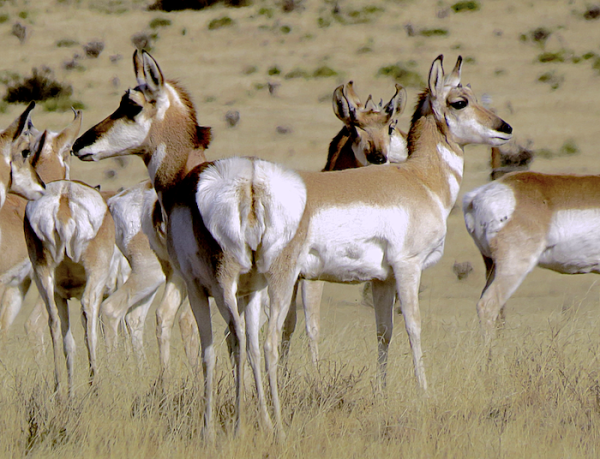Mountain Lion Preying on Sheep Killed



A large mountain lion observed killing livestock near a family home in western Cimarron County was killed by an Oklahoma Department of Agriculture, Food & Forestry Wildlife Services officer Saturday, April 1.
A landowner reported the mountain lion to an Oklahoma Department of Wildlife Conservation game warden, who followed existing protocol and contacted the Wildlife Services Division of the Agriculture Department. Wildlife Services is responsible for situations of depredation or destruction of property involving mountain lions.
The landowner told officials his son reported that a mountain lion had killed sheep near the driveway of his home.
The game warden and Wildlife Services officer responded to the scene to investigate. They determined a large mountain lion had entered a pen through a wire mesh fence, most likely earlier Sunday morning. The lion killed three sheep in the pen, and dragged two of the dead sheep a total of 400 yards to the fence. The lion was unable to pull the sheep through the fence and left, reports said.
Shortly after noon Saturday, the big cat returned to the pen and began feeding on one of the dead sheep about 35 yards from the front door of the house. The landowner’s daughter-in-law went outside and observed the lion, which apparently became spooked and left the area. At that point, the son and his wife called his father, who in turn reported the sighting to authorities.
Just before sunset, the mountain lion returned and was killed.
Officials said the existing protocol to deal with the situation worked well. This big cat’s behavior demonstrated that it was a confirmed threat to livestock and a potential threat to people. While most wild animals are wary of human contact, this big cat was exhibiting predatory behavior very near a house. Officials confirmed through forensic examination that this mountain lion was indeed responsible for killing the sheep in the pen. The Wildlife Department took possession of the lion for further scientific examination.
Also going by the names panther, cougar and puma, the mountain lion is a native to Oklahoma. One of the state’s most elusive species, mountain lions were originally found throughout Oklahoma and were thought to have been extirpated in the state during the 19th century.
It is a common misconception among the public that the Wildlife Department denies the existence of mountain lions in the state.
In the past 15 years, the Wildlife Department has confirmed about a dozen mountain lion sightings. In 2011, a sub-adult male mountain lion was struck and killed on U.S. 81 near Minco. An adult male was killed illegally in Cimarron County in February 2010. In April 2010, a young radio-collared male from Colorado traveled through Texas County in the Panhandle and continued on to New Mexico. In the fall of 2009, trail cameras in Tillman and Atoka counties recorded mountain lions. In 2006, a mountain lion in Cimarron County was killing a landowner’s goats and was shot, and in 2004, a young radio-collared male from the Black Hills of South Dakota was hit by a train near the town of Red Rock.
Several characteristics distinguish mountain lions from other wildlife and domestic animals. Its tail is more than half the length of its body, and it has black tips on the tail and ears. Its coat is primarily tan in color. Males average 7 feet long and weigh about 140 pounds, while females average 6 feet in length and weigh about 95 pounds.
There is no season on mountain lions. However, mountain lions can be taken year-round when committing or about to commit depredation on any domesticated animal or when deemed an immediate safety hazard. Individuals who kill a mountain lion must immediately call a game warden or other Wildlife Department employee. The carcass (including hide) must be presented to a Wildlife Department employee within 24 hours for biological data collection, which may include the removal of a tooth.
The Wildlife Department asks people to report possible mountain lion sightings by filling out a reporting form. For a copy of the form, or for more information about mountain lions in Oklahoma, go online to www.wildlifedepartment.com/hunting/species/furbearers/mountain-lion.






